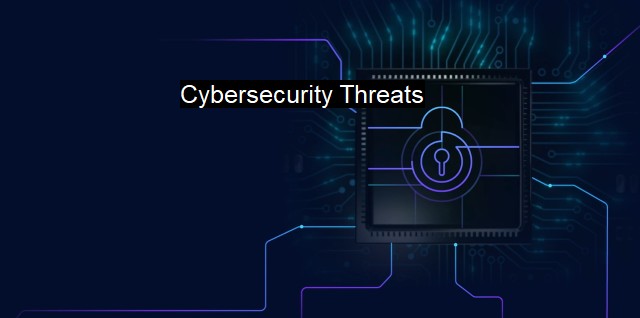What are Cybersecurity Threats?
Understanding Cybersecurity Threats and the Importance of Antivirus Software
Cybersecurity threats refer to any attempts of unauthorized or malicious activities aimed at compromising the integrity, confidentiality and availability of data in a digital system. These threats encompass acts such as data breaches, identity theft, transaction fraud, system disruption or shut-down, data modification as well as espionage that involve the exploitation of digital networks and systems.The cyber-world is increasingly becoming an unsafe space due to a robust wave of traditional and emerging threats. One of the prevalent traditional cybersecurity threats is a malicious software often abbreviated as malware. Malware is a broad category encompassing different forms of harmful software, whether it be Trojupiterians, viruses, worms, or ransomware. This software is programmed to corrupt, destroy, or interrupt computer operations for devious purposes. For instance, Trojans can create backdoors in security whereby an attacker can remotely access and control a computer system, while ransomware can encrypt files and demand payment (ransom) for their release.
Cybersecurity threats also exist in the form of phishing. Phishers falsify digital identities to trick victims into revealing sensitive information. Frequently, this is done through deceptive emails, contacting victims and pretending to have an essence of legitimacy to scam them into clicking malicious links or attachments. As such, it downloads malware or leads to fraudulent web pages that prompt a user to input sensitive information.
Another predominant threat in the cyber realm arises from the advent and proliferation of advanced artificial intelligence technologies. Deepfake, for instance, uses AI to create or alter visual and audio content with an aim for it to appear genuine. This technology is potentially harmful as it could be used to generate convincing but false news stories or worse, fraudulent political campaigns to disrupt societies.
A modern technological society also faces cybersecurity threats in the form of man-in-the-middle (MITM) attacks. Here, an attacker stealthily interrupts and manipulates communication between two parties, relaying messages between them to make them believe they continue to communicate with each other directly. MITM can be targeted at any data being transferred, making financial transactions an especially lucrative target.
Cybersecurity threats also surface as Distributed Denial of Service (DDoS) attacks, an amplified type of Denial of Service (DoS) attack, where an attacker overwhelms system resources to make a digital service or website unreachable. DDoS attacks are often instigated from numerous devices simultaneously and can target any online service, from banks to news websites, making it a threat to services across all sectors in a digital society.
To stem off these threats, antivirus software and cybersecurity measures are critical. Antivirus software serves as the first-line defense against most forms of cybersecurity threats. It scans for, detects, and removes malicious software whilst also protecting the computer from incoming threats. effective cybersecurity necessitates more than antivirus software.
Following best practices for data protection, such as practicing safe browsing habits, keeping systems and software updated, using strong unique passwords, employing multi-factor authentication, creating back-up of important data and continuously educating users about the evolving threats, are important elements of a comprehensive cybersecurity regime. Implementation of proven security frameworks and standards, as well as involving cybersecurity experts in decision-making, is essential to guide the development and adoption of pragmatic cybersecurity strategies that successfully mitigate cybersecurity threats.
Cybersecurity threats encompass actions aimed at compromising the integrity, confidentiality and availability of a system or information. These threats are dynamic, inclusive of traditional threats, like malware and phishing, to more emerging ones like deepfake and MITM attacks. It's imperative then for both businesses and individuals to invest appropriately in antivirus software and improve cybersecurity literacy to be alert and defend against such cyber threats.

Cybersecurity Threats FAQs
What are common types of cybersecurity threats?
Common types of cybersecurity threats include viruses, malware, phishing attacks, ransomware, social engineering, and identity theft.How can antivirus software help protect against cybersecurity threats?
Antivirus software can help protect against cybersecurity threats by identifying and blocking malicious code such as viruses and malware before they can infect your device. Antivirus software can also scan incoming emails and attachments for potential threats and vulnerabilities.Why is cybersecurity important in today's world?
Cybersecurity is important in today's world because we rely heavily on technology to conduct business, communicate, and store personal information. The more we use technology, the more opportunities arise for cybercriminals to steal our personal information and money. Cybersecurity measures are necessary to protect ourselves against these threats.What are some best practices for maintaining good cybersecurity hygiene?
Best practices for maintaining good cybersecurity hygiene include using strong and unique passwords, keeping software and operating systems up-to-date, being cautious of suspicious emails and links, using antivirus software, and regularly backing up important data.| | A | | | B | | | C | | | D | | | E | | | F | | | G | | | H | | | I | | | J | | | K | | | L | | | M | |
| | N | | | O | | | P | | | Q | | | R | | | S | | | T | | | U | | | V | | | W | | | X | | | Y | | | Z | |
| | 1 | | | 2 | | | 3 | | | 4 | | | 7 | | | 8 | | |||||||